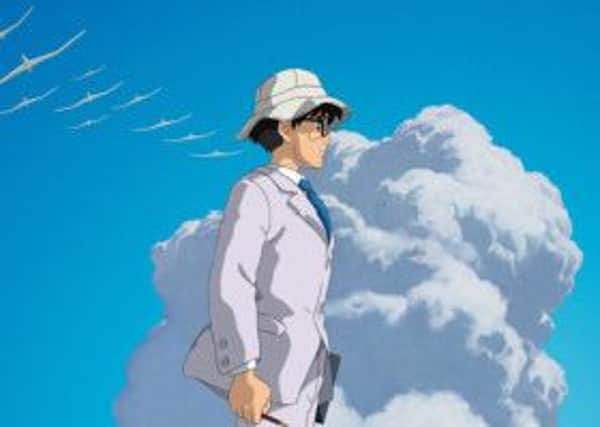MY WEEK (October 2, 2014): Animation genius Hayao Miyazaki says farewell


Over the past week I’ve spoken to comedian Seann Walsh (see next week’s issue), gone to a local art exhibition (page 48) and finished my article on Jason Cook (page 53). At the end of this week I’m off to The Archway Theatre in Horley to see Hamlet (page 65) and I might have a chance to talk to a well known female stand-up too.
Needing to unwind, I went shopping and was pleased to see that The Wind Rises, an animated film from one of my favourite directors, is already in shops.
Here’s my review:
Advertisement
Hide AdAdvertisement
Hide AdHayao Miyazaki has claimed that the The Wind Rises will be his last animated feature and I’m going to take him at his word. There’s a palpable sense of finality during the closing scenes as the movie’s artistic protagonist reflects on his life’s work.
On the surface, this film, which tells the fictionalised life story of a real aeroplane engineer called Jiro Horikoshi , is an odd note to go out on.
Jiro designed the Zero fighter plane for the Japanese in World War II. These were feared for being able to outmanoeuvre every other plane around and in the final months of the war they were adapted for kamikaze missions.
It’s hard to see how Miyazaki could romanticise the life of someone who designed such a lethal weapon, but he finds an interesting approach.
Advertisement
Hide AdAdvertisement
Hide AdHe presents Jiro as a complicated man, convinced from childhood that his goal is to create beautiful aeroplanes, even though he’s been warned that his dream is cursed. Jiro is frustratingly indifferent to the consequences of his actions and obsessively pursues his passion.
He’s a very difficult character to like, but Miyazaki makes Jiro’s genius easy to admire. In surreal dream sequences involving whimsical aircraft designs, we get to see how magical flight seems to Jiro. We also experience what Jiro hears when he listens to planes as they hum and chant in human voices.
There’s always been an underlying sense of melancholy in Miyazaki’s films and it’s brought to the fore in The Wind Rises when Jiro falls in love with a woman called Naoko who has tuberculosis. Jiro marries her anyway, but it’s not a fairytale romance and Naoko’s gradual deterioration is quietly upsetting. This tragedy helps highlight one of the main themes of the film: that dreams almost always give way to harsh reality. Jiro just wants to create beautiful things – and he does from a designer’s point of view – but it inevitably all goes wrong.
The Wind Rises has caused much controversy and it deals with some uncomfortable subjects. However, political opinions aside, this film offers a fascinating look at the soul of an artist, which makes it a fitting final movie for one of the greats of animation.